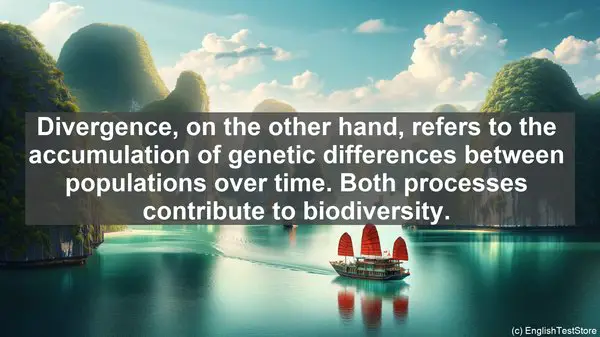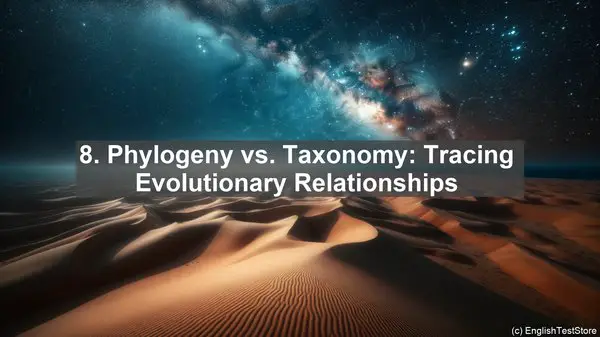Introduction: The Complexity of Evolutionary Genetics
Welcome to today’s lesson on the top 10 commonly confused words in evolutionary genetics. As we delve into this fascinating field, we often encounter terms that sound similar but have distinct meanings. Understanding these words is crucial for comprehending the nuances of genetic processes and their role in evolution. So, let’s get started!
1. Gene vs. Allele: The Building Blocks of Inheritance
When we think of genetics, we often think of genes. But what about alleles? While genes are the units of heredity, alleles are the different versions of a gene. For example, the gene for eye color can have different alleles, such as blue, brown, or green. Understanding the difference between genes and alleles is essential for comprehending inheritance patterns and genetic diversity within populations.
2. Mutation vs. Variation: The Drivers of Genetic Change
Mutations and variations are often used interchangeably, but they have distinct meanings. A mutation is a change in the DNA sequence, which can lead to a new allele. On the other hand, variation refers to the differences in traits within a population. While mutations are the ultimate source of variation, not all variations are due to mutations. Environmental factors and recombination also contribute to variation.
3. Homozygous vs. Heterozygous: The Two Sides of a Gene Pair
When we have two alleles for a gene, they can be either homozygous or heterozygous. Homozygous means having two identical alleles, while heterozygous means having two different alleles. This distinction is crucial in understanding dominant and recessive traits. Homozygous individuals express the trait associated with their alleles, while heterozygotes may show a different phenotype.
4. Genotype vs. Phenotype: From Genes to Traits
Genotype and phenotype are terms that describe different aspects of an organism. Genotype refers to the genetic makeup, the combination of alleles an individual carries. Phenotype, on the other hand, is the observable trait, the physical manifestation of the genotype. Understanding the genotype-phenotype relationship is fundamental in studying the inheritance of traits and their variation.

5. Selection vs. Drift: Forces Shaping Evolution
Selection and drift are two major forces that drive evolutionary change. Natural selection, as proposed by Darwin, is the process by which certain traits become more or less common in a population due to their impact on survival and reproduction. Drift, on the other hand, is the random change in allele frequencies over time. Both selection and drift play significant roles in shaping genetic diversity.
6. Gene Flow vs. Genetic Drift: The Movement of Genes
Gene flow and genetic drift both involve the movement of genes, but they have distinct mechanisms. Gene flow occurs when individuals or their gametes migrate between populations, leading to the transfer of alleles. Genetic drift, on the other hand, is the random change in allele frequencies within a population. While gene flow increases genetic diversity, genetic drift can lead to the loss of alleles.

7. Speciation vs. Divergence: The Formation of New Species
Speciation and divergence are terms used to describe the formation of new species. Speciation occurs when a population becomes reproductively isolated and evolves independently, leading to the formation of two or more distinct species. Divergence, on the other hand, refers to the accumulation of genetic differences between populations over time. Both processes contribute to biodiversity.
8. Phylogeny vs. Taxonomy: Tracing Evolutionary Relationships
Phylogeny and taxonomy are fields that deal with the classification and organization of organisms. Phylogeny focuses on reconstructing the evolutionary history of species, often represented as a tree-like structure. Taxonomy, on the other hand, is the science of naming and classifying organisms based on their characteristics. Both disciplines are essential in understanding the diversity of life.
9. Genetic Drift vs. Bottleneck: The Impact of Population Size
Genetic drift, as we discussed earlier, is the random change in allele frequencies. A bottleneck, on the other hand, is a drastic reduction in population size, often due to a catastrophic event. Bottlenecks can lead to a significant loss of genetic diversity and an increased impact of genetic drift. Understanding these concepts is crucial in conservation genetics and the preservation of endangered species.
10. Adaptation vs. Acclimation: Responses to the Environment
Organisms have various ways of responding to their environment. Adaptation refers to the genetic changes that occur over generations, enhancing an organism’s fitness in a particular environment. Acclimation, on the other hand, is a reversible response, often physiological, to a specific environmental condition. Both processes are essential for an organism’s survival and are shaped by natural selection.
